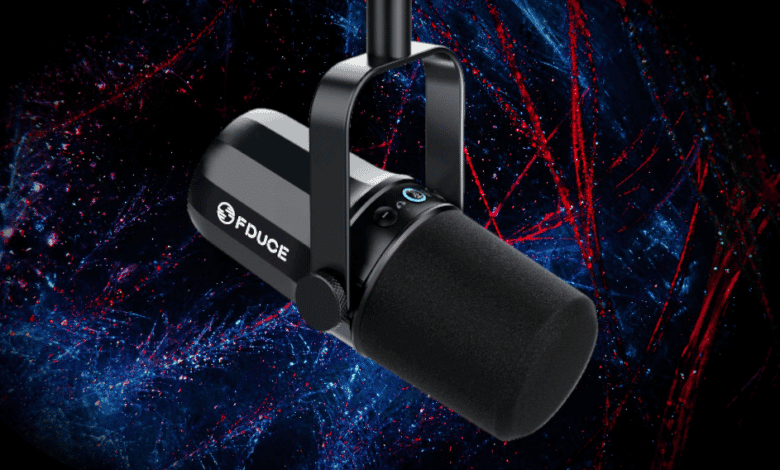
With the SL40, FDUCE, which has been active since 2019, has a new microphone on offer that is aimed at podcasters and streamers and is also supposed to be suitable for vocal recordings. For an MSRP of 100 euros, the manufacturer advertises a parallel connection via USB-C and XLR, as well as direct playback via a jack socket. There are also supposed to be some built-in digital sound enhancements and broad support, for example, for tablets or Playstation consoles as well.
Away from that, the microphone is advertised with usual points: The SL40, for instance, has a cardioid pickup pattern and a standard thread, so you can use it with the usual audio accessories. Also included are a volume control and a mute function.
Whether the FDUCE SL40 can set itself apart from the mass market with this combination, and how well the currently € 69.99 * expensive microphone does in practice, we clarify in the following test.
FDUCE SL40: Technical details
| Sampling frequency: | 96 kHz |
| Bitrate: | 24 bit |
| Connection: | XLR, USB-C, TRS (jack) |
| Impedance: | 600 Ω |
| Sensitivity: | -54 dB ± 1.5 dB |
| Directivity: | cardioid |
| Frequency range: | 50 Hz – 14 kHz |
| Noise ratio: | 95 dB |
| Price: | € 69.99 * |
Scope of delivery
The FDUCE SL40 is delivered a color printed cardboard box. In it, packed in black foam, the microphone including pre-assembled mounting frame and pop shield, as well as the accessories. The latter consists of a USB to USB-C and an XLR cable with a length of two meters and without a cable sleeve. In addition, the SL40 comes with an adapter (USB to USB-C) and a threaded insert so that you can use the mount not only with the built-in 5/8″ thread, but also with a 3/8″ thread.
Design & Workmanship
As mentioned earlier, the SL40 comes pre-assembled: The microphone is fixed in a fork by two screws on the side. There is no standard thread on the microphone itself. Instead, a female 5/8″ thread is built into the base of the mounting frame, which can be used to attach the SL40 to a standard tripod. Placing it in a microphone spider, on the other hand, might not be possible without further ado due to the protruding arm and the female thread.
With the exception of the thread adapter, all accessories and the microphone itself are black. Visually, the SL40 presents itself simply: As usual, the microphone relies on a cylindrical shape, which is approximated by twelve smooth surfaces on the sides as decoration. The manufacturer’s logo is printed in white on the left and right of the housing.
All of the microphone’s connectivity options are located on the underside, where the XLR, USB-C and jack connectors are found. On the other hand, the microphone is operated via three buttons on the front: The volume of the microphone and the built-in jack can be changed and the microphone can be muted with these buttons. The corresponding imprints are printed “upside down” – the SL40 is thus designed for operation from “above”.
FDUCE can convince with the SL40 in terms of material selection and workmanship: the microphone and the holding frame are completely made of metal and are visually and haptically free of workmanship flaws. Overall, both look very high-quality. Those looking for criticism could only chalk up one thing: At least in the gaming market, cable sleeves have become widespread. Here, the included, unsleeved cables look a bit less high-end in comparison. However, this is of course not really a bad thing: If you want, you can always replace the standard cables with other cables, or add a sleeve afterwards as an interim solution.
Setup & Operation of the FDUCE SL40
Setting up the FDUCE SL40 is as simple as can be. When connected via USB cable, this simply has to be plugged in. Afterwards, we were able to use the SL40 directly, both under Windows and Android, without time-consuming driver installation.
The setup with the XLR interface is just as simple. The microphone has to be connected to a corresponding audio interface and you can start right away. The power supply is provided by the interface. A power supply via phantom power is not necessary.
Depending on the selected connection type, there are differences with the SL40. If the microphone is connected via USB, it lights up: The center button signals the mute function with blue and red color, respectively. To the left and right of it, there are also two additional blue LEDs that indicate whether the recording gain or playback volume of the headset is being adjusted at the jack socket with the two additional buttons.
These simple control and playback options are missing in XLR mode: Here the SL40 acts as a “passive” microphone – the LEDs remain off and the buttons have no function. However, this would hardly have made sense otherwise: The functions provided directly on the microphone require AD conversion of the microphone signal, but in XLR mode this is supposed to be handled by the audio interface. In addition, the functions provided by the microphone are supported by the vast majority of interfaces anyway, so the missing control options are not tragic here.
Another difference between XLR and USB operation is the signal splitting. Like most microphones, the SL40 has only a single diaphragm, resulting in only one recording channel. In USB mode, however, this sound signal is automatically copied to a second channel, so that the SL40 outputs an (artificial) stereo signal. In contrast, only the “real” channel is transmitted to an audio interface, as usual. If you want stereo sound here, you either have to connect a second microphone, or simply help out via software / on the interface.
Overall, the SL40 is well implemented in both modes: USB mode offers a usual all-in-one solution with simple control options, and XLR mode provides, as desired for this connection, the raw recording track – without further bells and whistles.
Location, recording and playback quality
The deciding factor in the end, of course, is recording quality, and here the SL40 does well. The soundstage between USB operation and at the audio interface – in our case at a Focusrite Scarlett 2i2 – differs slightly, but in both cases the microphone delivers low-noise, distortion-free recordings with, subjectively at least, a pleasant sound. The frequency response published by FDUCE suggests that the microphone does not exactly have the most linear frequency response of all – but for the vast majority of users this should be of secondary importance compared to the subjective timbre. With regard to this, it is best to listen to the microphone yourself – as in the following video, for example:
In any case, the SL40, like many other microphones in the same price range, is on a sonic level where initial investments in room acoustics and placement should have more effect on the sound than the extra cost of an even more expensive microphone.
With regard to placement, it should be noted that the SL40 is designed to be operated from “above” due to the twisted imprints. The focal direction of the diaphragm matches this: It lies along the longitudinal axis of the housing. Put simply: the microphone picks up loudest in the direction of the “top”, whereas the volume sensitivity is much lower to the side and especially in the direction of the ports.
Given the lack of a microphone tiller, care should be taken when selecting a stand to ensure that it keeps vibrations away from the microphone as much as possible. If you place the microphone directly on the table without decoupling elements, typing noises, for example, will be transmitted disproportionately loud. In an emergency, a few layers of foam or rubber dampers should help.
Finally, a few words about the playback quality: If you operate the FDUCE SL40 via USB and connect it to a headset, it can be used as a playback device with an additional microphone feed, as already mentioned. The basic audio quality of the built-in DAC is good: There is nothing to criticize about the playback itself, which is noise-free and equipped with a reasonable dynamic range.
Unfortunately, the feed of the microphone signal is critical: This is overlaid by a noticeable noise, which is not transmitted to the computer, neither with the USB nor the XLR recording. What exactly causes this is unclear to us, since the A-D conversion in the microphone actually does a good job. But in any case, at least in our sample, this diminishes the usefulness of the built-in jack socket.
Summary of the FDUCE SL40 test
FDUCE sends with the SL40 a microphone into the race, which promises a high sound quality and a connection via USB and optionally also via XLR for a recommended price of 100 euros. The basic implementation is pleasing: The SL40 combines a good recording quality with an excellent workmanship and a sensible and for the price usual feature set. Whether the additional XLR or USB connection is useful, depending on your point of view, is up to you. Of course, you pay for the corresponding connection and the associated electronics – that should be considered when buying.
This brings us directly to the critical point: the price. At least with the exception of the built-in jack socket, the microphone is solid all around, but there is a lot of competition on the market by now. The aforementioned MSRP of 100 euros makes the SL40 here – but fortunately, this is obviously not set in stone. The microphone is already offered on Amazon – with a coupon – for 80 Euros. In this price range, the price-performance ratio is right, even if it is not enough to be called a price breaker. At least if one is not explicitly dependent on the coexistence of XLR and USB.
FDUCE SL40
Workmanship / material
Recording quality
Features
Value for money
86/100
Good microphone with weakness in playback on the device.
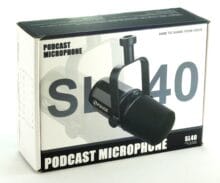

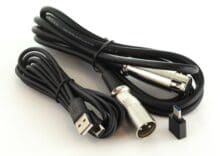
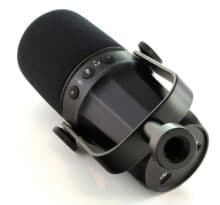
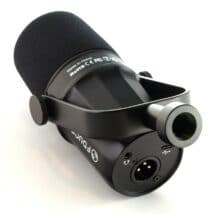
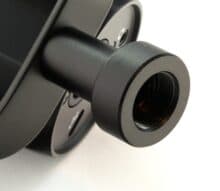
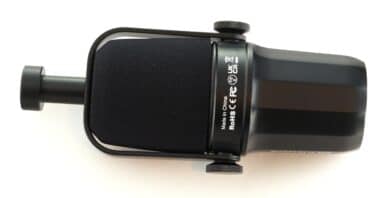




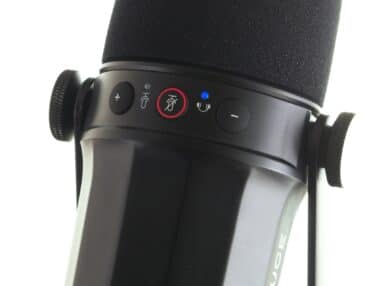
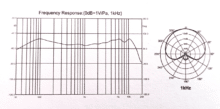
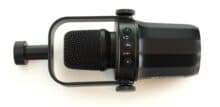

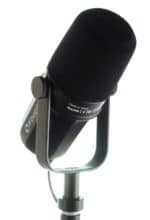



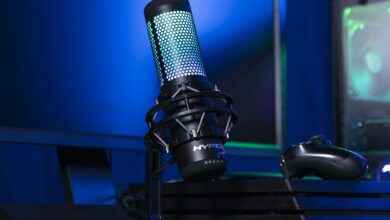



No replies yet
Neue Antworten laden...
Gehört zum Inventar
Beteilige dich an der Diskussion in der Basic Tutorials Community →